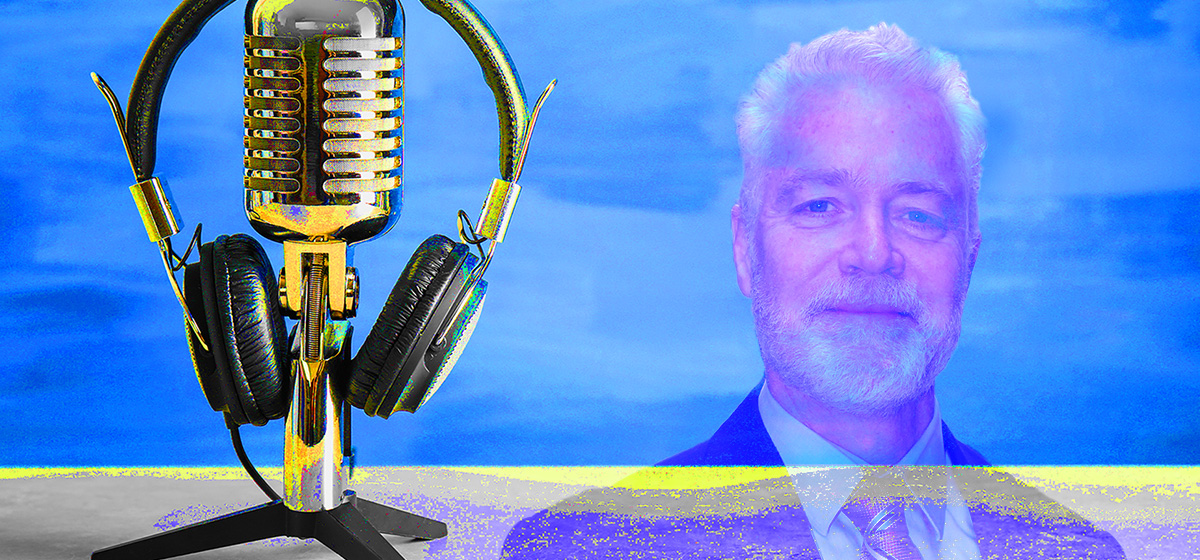New URA Director Brings Fresh View of Pittsburgh’s Potential and Assets

Donald Bonk interviews Greg Flisram, executive director of the Urban Redevelopment Authority, as part of the Pittsburgh Tomorrow podcast series. This interview was conducted before COVID-19. The transcript is abridged and edited for clarity.
View the episode archive here. Read Greg Flisram’s bio here.“Geographically, where the city is—kind of nestled in the lower Great Lakes, Appalachia, the East Coast—really positions it to be a major center of creativity, innovation and crossroads.” —Greg Flisram
Donald Bonk: Hello. I’m Donald Bonk with the Pittsburgh Tomorrow project for Pittsburgh Quarterly magazine. The Urban Redeveloping Authority’s executive director, Greg Flisram is here with me today. We’re here to talk about the future of Pittsburgh. Greg, I know that you recently came to Pittsburgh from another city. To give context to the folks in the audience, can you give us a little bit of your backstory?
Greg Flisram: I came to Pittsburgh from Kansas City, Mo. I was there for five years; the latter several months I was the interim president and CEO of the Economic Development Corporation of Kansas City. Prior to that, I worked as development director for the city of Green Bay, Wis. As a development director in Green Bay for a number of years, and prior to that, I was a redevelopment and economic development consultant, working throughout the United State on large scale strategic plans, urban redevelopment plans and plan implementation. Half of my career has been spent in the private sector as a consultant, and the latter half has been in the public sector.
Bonk: I know that you’re relatively new here, but we’re trying to look at the city in a couple of different cross-cutting ways and then do so in an imaginative way. The first question is, what would make Pittsburgh one of the most ideal cities or best cities in the world?
Flisram: Part of that would be unabashedly being known as the greenest and smartest city in the United States, if not North America. By that, I mean not just as an aspirational thing, but really embrace and realize that—embracing sustainability, everything we do, being able to live very conveniently car-free through various multimodal forms of transit; river taxi, light rail, streetcar, even gondolas, as part of the package.
And also be known as the one of the smartest cities in the United States. By that, I mean not just technology-enabled city operations and Internet of Things (IOT) infrastructure, but also having the most educated workforce in the country in terms of higher-ed and workforce preparedness. So, not just a four-year degree, but people who are ready to be brought into the workforce with the adequate training and credentials to be productive.
One thing that the city struggles with, that a lot of cities struggle with, is how to bring people off the bench into the workforce, how to incorporate folks who haven’t been fully engaged in the workforce, into the workforce. The city has had great accolades in the national media in terms of how it’s repositioned itself as a technology center from an industrial, post-industrial economy. Population growth is flat and actually job growth has been pretty flat.
Part of that is it comes down to workforce. We need to be a place that is attractive to workforce from other parts of the country and also maximize the talent and the workforce that we have in the city now. Getting people prepared, mobilized, brought into the workforce—have that be a real focus, a concerted effort of the city.
Bonk: So, it’s talent in two directions. One is making the most of the folks that are here, but also attracting other folks that have those talents and abilities that can build the workforce and economy of tomorrow.
Flisram: That’s correct.
Bonk: The next direction we want to go is to take off all the boundaries and look at a blank sheet of paper, a blank whiteboard, and look at the moonshot idea. This is an idea that we iterated at the Pittsburgh Tomorrow brainstorming session. Is there an idea that, you know, you have one shot, one bullet, literally to make your statement? What is that moonshot idea? If you can, give us a little bit of detail and how that changes the narrative of Pittsburgh. It’s not only to have a transformational idea about the city, but to also incorporate that into the narrative in terms of identity in the way that the city talks about itself.
Flisram: That’s a great question. The city has all the potential and should aspire to become a World Heritage city. I think it’s got all the tools and assets in terms of art, innovation, creativity and technology. The physical setting is amazing. I think it could really aspire to be one of the very few.
Bonk: One of the U.N. designated.
Flisram: Exactly. We have all the assets here. There’s no reason why we can’t aspire to that. I think that really does play into this kind of transformative narrative of Pittsburgh. People in the national media—people who don’t know cities, which is a lot of people—don’t really recognize or haven’t seen the transformation that has gone on here. They still have an old economy view of what the city is about.
Bonk: The previous narrative.
Flisram: Yes. But they come here and see what’s happening around artificial intelligence, robotics, the arts, culture and life sciences, and they’re pretty much blown away by what’s going on here. I think there’s a way to parlay that into a bigger story about a World Heritage city.
Bonk: If I understand correctly, the narrative you’re weaving is that you’ve got this great backstory history—the steel industry and materials—but you’re wedding it to the artificial intelligence robotics future that’s upon us now, and you’re weaving that into a new narrative, with the idea of having a global identity as a World Heritage city, one of those cities that changes the world. We know that Pittsburgh did that in the early 1900s. We’re on the cusp of it now. And you’re bringing that narrative to the forefront, if I understand.
Flisram: Yes, a hub of creativity and innovation and all that comes with that.
Bonk: And the cultural assets that surround it and help catalyze it.
Flisram: That’s right.
Bonk: The last question we have for you is this. The year 1990 is as far away as 2050. I remember 1990 pretty well. The Pirates were in the playoffs against Cincinnati. But now 2050 is three decades into the future and we’re trying to drill down to more practical ideas. Can you give me three practical, doable, achievable steps maybe in the next three decades that Pittsburgh can put forward?
Flisram: I think you could probably shorten that to less than a decade. But the three things that the city needs to work on immediately to be able to aspire to these other things that I talked about, is to get a handle on the air quality issue in the region. It’s hard to be out there as the cleanest, smartest city if you are dealing with air quality issues. I know the city has come a long way from the steel mills, but that has to be an issue that we’re laser-focused on.
Another everyday thing that the city is going to need to do—it sounds kind of quotidian—is to have more direct flights to more places in the country. We need to be able to have more transportation connectivity. Be knit in. Not just air—that would be a big part—but high-speed rail, hyperloop, whatever it might look like. We have to have better national and global connections if we want to be a really attractive place for talent, and national and international commerce.
And then again, this last one would be this mobility issue. We can’t have a thriving city if we have these large concentrations of poverty, where people are disconnected from jobs, from opportunity, from education. Those are all attainable things that can be done within 30 years. Probably should be done within five years.
Bonk: So there is connectivity in three dimensions; air quality surrounds us. You want to make sure that the air quality is at the highest level of quality. And then you also want to make sure that we’re connected physically to the world around us. And then thirdly, make sure that the people in the city are connected physically to opportunities.
Flisram: I hadn’t thought about that way. But that is exactly right.
Bonk: Now that’s really helpful in contextualizing things. Thanks. Is there anything else that you’d like to share with the audience? This is your platform to talk about the future Pittsburgh.
A sidebar: We’ve watched people who are trail guides, such as Lewis and Clark back in the day, go to new and unexplored territories. We’d like to think that the Pittsburgh Tomorrow series as a guide to the future, not necessarily the phone booth of “Doctor Who” for those science nerds out there (like me). But the thought is that we’re taking a trip to the future.
Is there anything else that you would like to personally share about Pittsburgh, the future, your tenure here, your time?
Flisram: I’m really sanguine and really high on Pittsburgh. I wouldn’t have taken this job if I didn’t think it was a great place. It wasn’t because of the pay that I came here; it was because of the fact that I think that the city is really on the upswing and has a lot to offer. People have to remember that this city, compared to a lot of post-industrial cities, my hometown, Milwaukee, and others like Kansas City, has got some great legacy assets in CMU, University of Pittsburgh and UPMC. The foundation community is still alive here and in a big way. Those are assets that aren’t ubiquitous. Not everybody has those things.
Geographically, where the city is—kind of nestled in the lower Great Lakes, Appalachia, the East Coast—really positions it to be a major center of creativity, innovation and crossroads. I see a lot of things lining up for the city, and I’m really excited about the future here.





